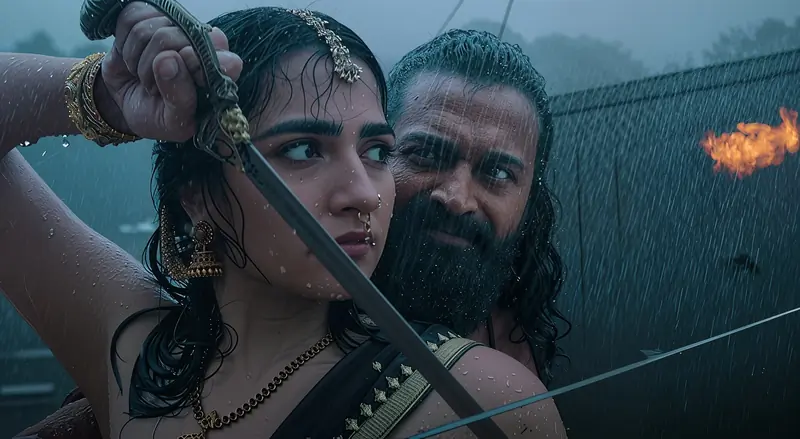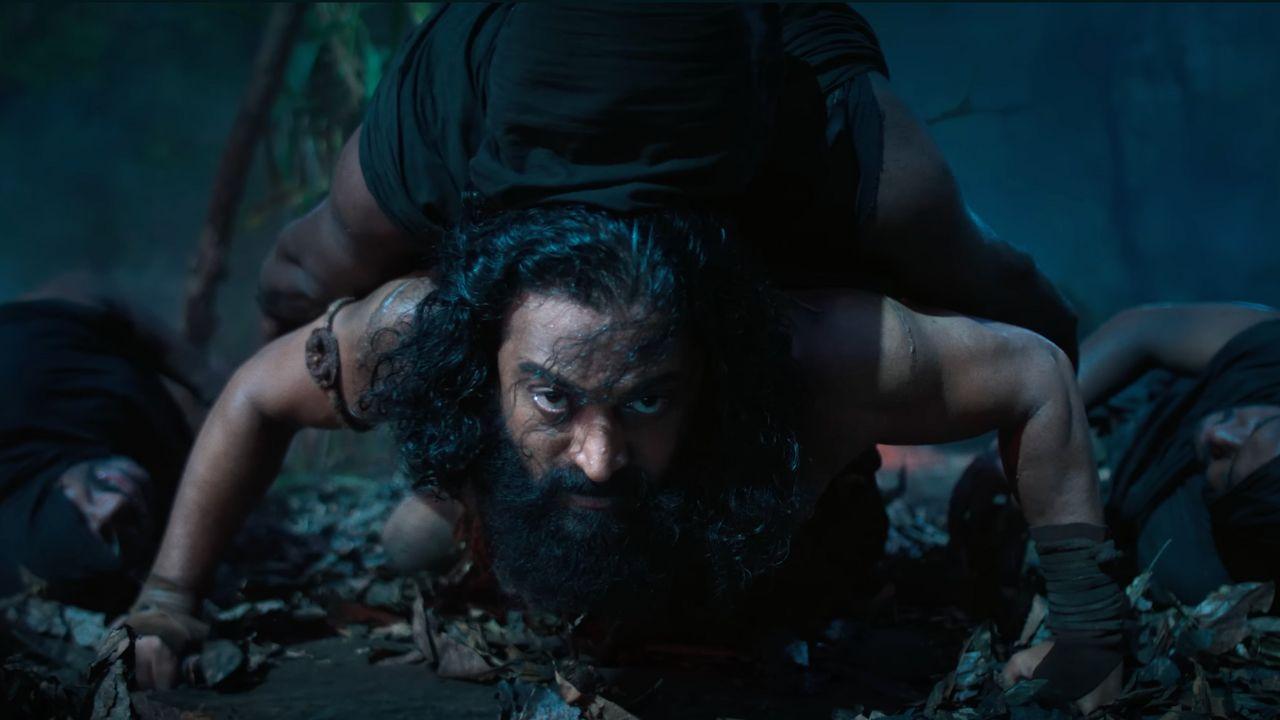Kantara: A Legend – Chapter 1, a prequel to Rishabh Shetty’s Kantara (2022) phenomenon, turns back the clock to the sacred lore and the generational strife that lie at the heart of its mythology. Rooted in the dominion of the Kadamba kings of Banavasi, the film reaches into pre-colonial Karnataka to trace the origins of a culture where devotion, ritual, and power were in constant tension. The canvas is broader, the set pieces grander, and the lead performance more heightened than before. Yet, in amplifying its spectacle, the film risks diluting the raw immediacy of feeling that made the original echo with enduring power.
Kantara: Chapter 1 positions its tale reaching back to the roots of the daivas and the guliga that loomed over the first film. At its center is Berme (Rishab Shetty), a warrior bound to the sacred power of the Kantara forest, where his identity and destiny are inextricably tied to the land. The hamlet’s uneasy truce with the Kadamba kingdom hangs by a thread maintained by King Vijayendra (Jayaram), but threatened by his wayward son Kulasekhara (Gulshan Devaiah), who covets the forest and its riches. When Berme ventures beyond the forest to Bangra Port, betrayal and violence follow. The conflict escalates as Kulasekhara wages war on the forest dwellers, driving Berme into a path of vengeance. In the chaos, Princess Kanakavathi (Rukmini Vasanth) emerges as a voice for reconciliation, even as her fate becomes entwined with the unraveling bloodshed. What remains at the end is not simply the victory of good over evil, but the reaffirmation of a mythic covenant between land, spirit, and people.
While the 2022 Kantara was a rooted tale about traditions and folk narratives from coastal Karnataka, Kantara: Chapter 1 positions itself as a timeless story of greed, with the contested land of the Kantara forest, revered as God’s enchanted garden, at its center. In the earlier film, the conflict grew out of land once granted by a benevolent landlord to poor and low-caste forest dwellers, only to be usurped later by those in power. Here, the strife intensifies when Berme, a tribal warrior, attempts to engage in trade at the Kadamba dynasty’s port. His ambition unsettles the power equation, bruising the authority of the rulers and setting in motion a chain of violence. What begins as a struggle for access to resources evolves into a larger battle over identity, dignity, and survival. Berme’s arc is significant because he is not drawn as a solitary hero but as the voice of his community, stepping forward to resist exploitation that feels as contemporary as it is historical. The idea that sacred lands can be commodified by rulers echoes the exploitation of tribal communities in modern India, giving the film a universality that transcends its period setting. Rishab Shetty heightens this struggle by drawing deeply from myth and folklore, allowing divine symbols and ancestral lore to bleed into the drama. The sudden appearance of the tiger, the invocations of daivas and guliga, and the rituals embedded in the storytelling elevate the film beyond a conventional historical conflict. They lend it the quality of myth-making, where legend and lived reality blur. In doing so, Shetty reminds us that folklore is not ornamental, but a living force that shapes politics, faith, and rebellion. The mythic textures bind the narrative into something larger than a period piece. They make it a parable of power and resistance, resonant both within the screen and outside it.

Cinematographer Arvind S. Kashyap doesn’t just frame the grandeur of the forest or the opulence of the palace. He finds the characters within those spaces, giving the imagery a human dimension. The editing by Suresh Mallaiah feels pacy, even restless, in the first half, as the film races to pour in exposition before the interval, but it settles into a sharper rhythm once the battles begin. The action is cut for impact, never losing sight of clarity or momentum. The soundscape is dominated by B. Ajaneesh Loknath’s score, which swells and recedes with the drama, often taking precedence over subtler sound design, but always in harmony with the film’s operatic ambitions. Visual effects and action choreography blend seamlessly into the storytelling. The computer-generated animals and divine incarnations from Hindu mythology appear with conviction, becoming one of the film’s striking highlights. They enhance rather than overwhelm, and for a film of this scale, that restraint is its quiet triumph.
Rishab Shetty, as Berme, dominates the screen in both presence and performance. He builds the character with a muscular physicality while grounding it in emotional conviction. Like in the earlier film, there are moments when he becomes possessed by Guliga, and these sequences allow him to push his performance into a space that is both visceral and compelling. Jayaram, as King Vijayendra, lends the part a kind but authoritative presence, embodying a ruler torn between diplomacy and tradition. Gulshan Devaiah plays Prince Kulasekhara with a mix of comic arrogance and sinister intent. Though his character never fully acquires the depth needed for a formidable antagonist. Rukmini Vasanth, as Princess Kanakavathi, delivers one of the film’s most nuanced turns. She is more than a symbolic enabler. Her role is shaded with complexity that elevates her performance beyond the ornamental, allowing her to stand alongside the men in both voice and consequence.
Kantara: Chapter 1 does not carry the same emotional force as its predecessor; too often its transitions feel hurried, its connective tissue strained under the weight of scale. The result is a film that dazzles more than it moves, offering grandeur where intimacy is missed. Yet what it achieves is still remarkable. What lingers is not only the clash of gods and warriors but the sense that cinema, at its best, can fuse myth and craft into something at once ancient and immediate.


